Nickname(s) "Fearless Freddie" Name Frederick Funston | Years of service 1898–1917 | |
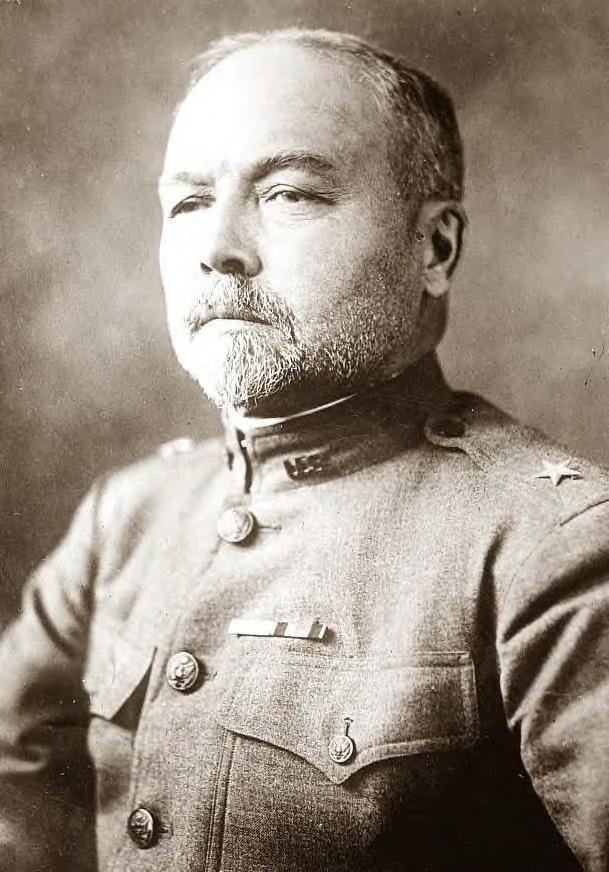 | ||
Born November 9, 1865New Carlisle, Ohio, U.S. ( 1865-11-09 ) Allegiance United States of America Books Memories of two wars, Memories of Two Wars; Cuban and Philippine Experiences Battles and wars | ||
Uss frederick funston the last voyage see facebook uss frederick funston for more
Frederick Funston (November 9, 1865 – February 19, 1917) also known as Fighting Fred Funston, was a general in the United States Army, best known for his role in the Spanish–American War and the Philippine–American War. He received the Medal of Honor for his actions during the Philippine–American War.
Contents
- Uss frederick funston the last voyage see facebook uss frederick funston for more
- General hugh l scott general frederick funston and general alvaro obregon in el hd stock footage
- Early life and education
- Career
- Cuba
- Philippines
- Sideco house Emilio Aguinaldos seat of First Philippine Republic
- United States and overseas again
- World War I and death
- Medal of Honor citation
- Legacy
- In popular culture
- References
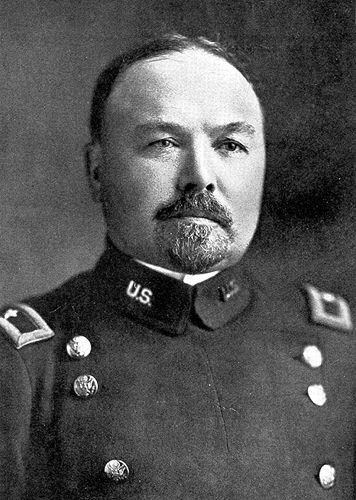
General hugh l scott general frederick funston and general alvaro obregon in el hd stock footage
Early life and education
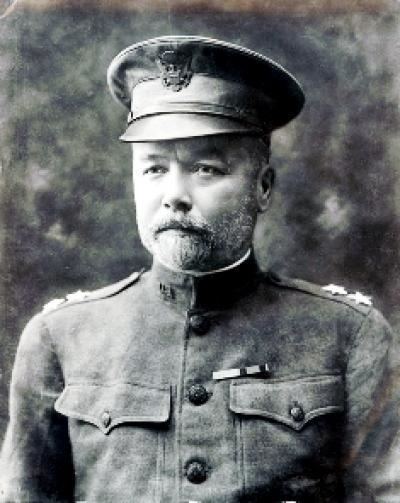
Funston was born in New Carlisle, Ohio to Edward H. Funston and Anne Eliza Mitchell Funston. In 1881, his family moved to Allen County, Kansas. His father, was elected to the United States House of Representatives in 1884.
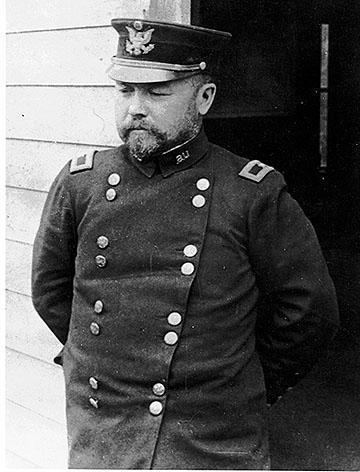
A slight individual who stood just 5 ft 5 in (1.65 m) tall and weighed only 120 pounds (54 kg), Funston was outscored on the 1884 admissions test to the United States Military Academy, then attended the University of Kansas from 1885 to 1888, but did not graduate. While there, he joined the Phi Delta Theta fraternity and became friends with future Pulitzer Prize winner William Allen White. He worked as a trainman for the Santa Fe Railroad before becoming a reporter in Kansas City, Missouri, in 1890.
Career

After one year as a journalist, Funston moved into more scientific exploration, focusing primarily on botany. First serving as part of an exploring and surveying expedition in Death Valley, California. In 1891, he then traveled to Alaska to spend the next two years in work for the United States Department of Agriculture.
Cuba
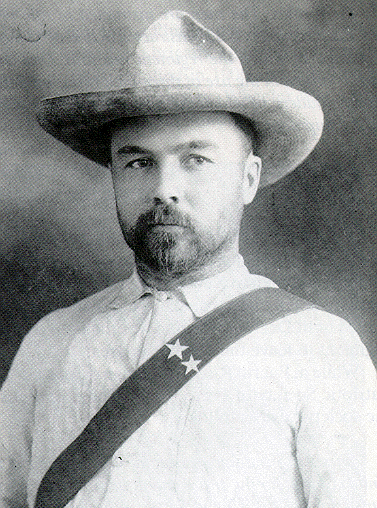
He eventually joined the Cuban Revolutionary Army that was fighting for independence from Spain in 1896 after having been inspired to join following a rousing speech given by Gen. Daniel E. Sickles at Madison Square Garden in New York City.
After a bout of malaria, Funston's weight dropped to an alarming 95 pounds and he was given a leave of absence by the Cubans. When Funston returned to the United States, he was commissioned as a colonel of the 20th Kansas Infantry in the United States Army on May 13, 1898, in the early days of the Spanish–American War. In the fall, he met Eda Blankart at a patriotic gathering, after a brief courtship they married on October 25, 1898. Within two weeks of the marriage, he landed in the Philippines as part of the U.S. forces that would become engaged in the Philippine–American War.
Philippines
Funston was in command in various engagements with Filipino nationalists. In April 1899, he took a Filipino position at Calumpit by swimming the Bagbag River, then crossing the Pampanga River under heavy fire. For his bravery, Funston was soon promoted to the rank of brigadier general of Volunteers and awarded the Medal of Honor on February 14, 1900.
Funston played the key role in planning and executing the capture of Filipino President Emilio Aguinaldo on March 23, 1901, at Palanan. The capture of Aguinaldo made Funston a national hero, although the anti-imperialist faction criticized him when the details of the capture became known. Funston's party, escorted by a company of Macabebe scouts, had gained access to Aguinaldo's camp by posing as prisoners of Macabebe scouts. In recognition of his capture of Aguinaldo, Funston was appointed a brigadier general in the Regular Army at the age of 35. Funston's mission to capture Aguinaldo brought him a Regular Army commission just as he was scheduled to be mustered out of the volunteer service.
In 1902, Funston returned to the United States to increased public opposition to the Philippine–American War and became the focus of a great deal of controversy. Mark Twain, a strong opponent of U.S. imperialism, published a sarcasm-filled denunciation of Funston's mission and methods under the title "A Defence of General Funston" in the North American Review. Poet Ernest Crosby also wrote a satirical, anti-imperialist novel, Captain Jinks, Hero, that parodied the career of Funston.
Funston was considered a useful advocate for American expansionism, but when he publicly made insulting remarks about anti-imperialist Republican Senator George Frisbie Hoar of Massachusetts, mocking his "overheated conscience" in Denver, just before a planned trip to Boston, President Theodore Roosevelt denied his furlough request, and ordered him silenced and officially reprimanded.
Sideco house (Emilio Aguinaldo's seat of First Philippine Republic)
The house had been the seat of General Emilio Aguinaldo's First Philippine Republic when he established it as his headquarters in San Isidro during the last part of his odyssey from the American forces.
On March 29, 1899, Gen. Emilio Aguinaldo arrived in San Isidro, Nueva Ecija, and proclaimed the town capital of the First Philippine Republic. He stayed in the house, using it as the de facto Philippine capitol. When the Americans occupied San Isidro, the Sideco house served as the headquarters of Gen. Frederick Funston, who would later capture General Aguinaldo in Palanan, Isabela. General Aguinaldo's capture is said to have been planned in this house. It is now occupied by a Christian organization.
United States and overseas again
In 1906, Funston was in command of the Presidio of San Francisco when the 1906 San Francisco earthquake hit. He declared martial law in response, although he did not have the authority to do so, and martial law was never officially declared. Funston attempted to defend the city from the spread of fire, and directed the demolition of buildings using explosives, including black powder, artillery charges, and dynamite, to create firebreaks. However Funston's orders often resulted in more fires. Funston gave orders to shoot all looters on sight; however, these orders resulted in numerous cases of innocent shootings.
At the corner of Market and Third Streets on Wednesday I saw a man attempt to cut the fingers from the hand of a dead woman in order to secure the rings which adorned the stiffened fingers.
One man made the trooper believe that one of the dead bodies lying on a pile of rocks was his mother, and he was permitted to go up to the body. Apparently overcome by grief, he threw himself across the corpse. In another instant the soldiers discovered that he was chewing the diamond earrings from the ears of the dead woman ... The diamonds were found in the man's mouth afterward.
The soldiers do all they can, and while the unspeakable crime of robbing the dead is undoubtedly being practiced, it would be many times more prevalent were it not for the constant vigilance on all sides, as well as the summary justice.
Funston's actions were later assessed with a mixture of criticism and praise. Most of the criticism of his methods occurred after the fact; those who experienced and survived the tragedy first-hand were nearly universal in hailing him as a hero who did what was necessary in the face of utter chaos.
From December 1907 through March 1908, he was in charge of troops at the Goldfield mining center in Esmeralda County, Nevada, where the army put down a labor strike by the Industrial Workers of the World.
Then, after two years as Commandant of the Army Service School in Fort Leavenworth, he served three years as Commander of the Department of Luzon in the Philippines, then was briefly shifted to the same role in the Hawaiian Department (April 3, 1913 to January 22, 1914).
Funston was active in the conflict with Mexico in 1914 to 1916 as commanding general of the army's Southern Department, becoming a major general in November 1914. He occupied the city of Veracruz, and commanded all forces involved in the hunt for Pancho Villa and security of the United States border with Mexico during the "Bandit War".
World War I and death
Shortly before the U.S. entry into World War I, President Woodrow Wilson favored Funston to head any American Expeditionary Force (AEF). His intense focus on work would lead to health problems, first with a case of indigestion in January 1917, followed by a fatal heart attack at the age of 51 years in San Antonio, Texas.
In the moments leading up to his death, Funston was relaxing in the lobby of The St. Anthony Hotel in San Antonio, listening to an orchestra play The Blue Danube waltz. After commenting, "How beautiful it all is," he collapsed from a massive painful heart attack (myocardial infarction) and died. He was holding six-year old Inez Harriett Silverberg in his arms.
Douglas MacArthur, then a major, had the unpleasant duty of breaking the news to President Wilson and Secretary of War Newton D. Baker. As MacArthur explained in his memoirs, "had the voice of doom spoken, the result could not have been different. The silence seemed like that of death itself. You could hear your own breathing."
Funston lay in state at both the Alamo and the City Hall Rotunda in San Francisco. The latter honor gave him the distinction of being the first person to be recognized with this tribute, with his subsequent burial taking place in San Francisco National Cemetery. After his death, his position of AEF commander went to General John Pershing, who as commanding general of the Punitive Expedition in 1916 had been Funston's subordinate. The Lake Merced military reservation (part of San Francisco's coastal defenses) was renamed Fort Funston in his honor, while the training camp built in 1917 next to Fort Riley in Kansas (which became the second-largest World War I camp) was named Camp Funston. San Francisco's Funston Park and Funston Avenue are named for him, as is Funston Avenue in his hometown of New Carlisle, Ohio, and Funston Avenue near Fort Sam Houston in San Antonio. In Hawaii, Funston Road at Schofield Barracks and Funston Road at Fort Shafter are named after him. Funston's daughter, and his son and grandson, both of whom served in the United States Air Force, were later interred with him.
Medal of Honor citation
Legacy
There are streets named for Funston in both San Francisco and New Carlisle, Ohio. Part of Fort Riley, Kansas, was also named for him, as is Funston Street on Fort Leavenworth, Kansas and Funston Street in Hollywood, Florida.
